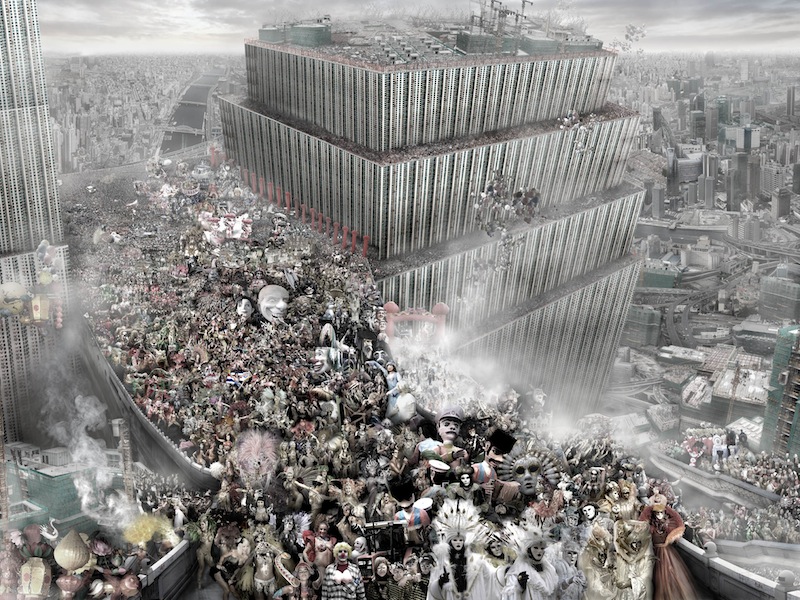
© » KADIST
Du Zhenjun
The Tower of Babel is an installation of large-format photographs that forces the audience to occupy a central position through its monumental scale. These photographs present a series of urban landscapes and assembled Foucauldian structures of the present. Du sees the Tower of Babel as a continually reinvented narrative that warns people of “dangerous tendencies in the present time.” Du’s Babylonian towers resurrect from fallen rubbles of religious history in grand scale to focus on modern crises of civilization.

© » KADIST
Du Zhenjun
The Tower of Babel is an installation of large-format photographs that forces the audience to occupy a central position through its monumental scale. These photographs present a series of urban landscapes and assembled Foucauldian structures of the present. Du sees the Tower of Babel as a continually reinvented narrative that warns people of “dangerous tendencies in the present time.” Du’s Babylonian towers resurrect from fallen rubbles of religious history in grand scale to focus on modern crises of civilization.

© » KADIST
Hu Yun
This research-based artwork acts as a memorial to early twentieth century European exploration of China. An antique open suitcase reveals a pile of rubbings and an air-dried peony, while projected photographs of the Chinese landscape appear as a slideshow on the gallery wall. The artifacts refer to a 1908-1909 expedition of naturalists, missionaries, and colonists to the west of China, which ended abruptly with the death of one of the travelers by unusual circumstances.

© » KADIST
Du Zhenjun
The Tower of Babel is an installation of large-format photographs that forces the audience to occupy a central position through its monumental scale. These photographs present a series of urban landscapes and assembled Foucauldian structures of the present. Du sees the Tower of Babel as a continually reinvented narrative that warns people of “dangerous tendencies in the present time.” Du’s Babylonian towers resurrect from fallen rubbles of religious history in grand scale to focus on modern crises of civilization.
Du Zhenjun
- location: Paris, France
- location: Shanghai, China
- year born: 1961
- gender: male
- nationality: Chinese
- home town: Shanghai, China
Hu Yun
- location: Shanghai, China
- year born: 1986
- gender: male
- nationality: Chinese
- home town: Shanghai, China